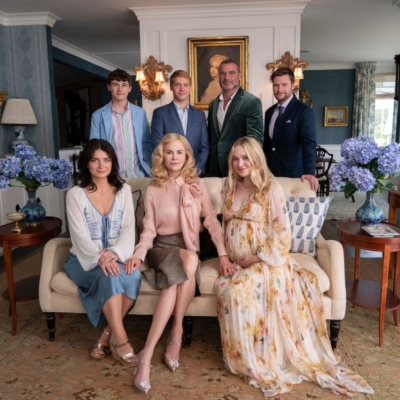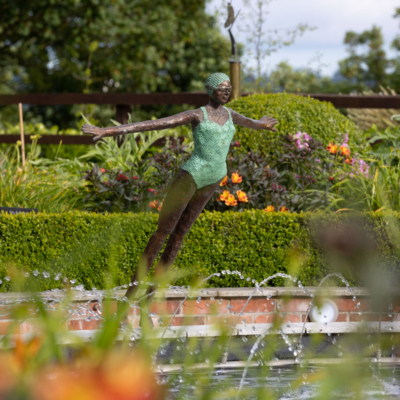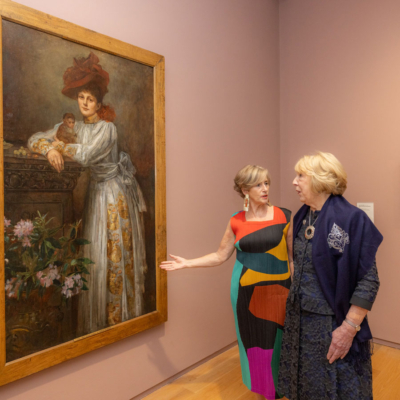“Lavery. On Location” is the highlight of the autumn programme at the National Gallery of Ireland. Curator Brendan Rooney tells us more about this legendary artist…

Sir John Lavery, (1856-1941) The Bridge at Grès, (1901).
Photograph © National Museums, NI Ulster Museum Collection.
Why is Sir John Lavery held in such high esteem in Irish art history?
Lavery had the distinction among most Irish artists of his generation of being a genuinely international figure. Well-travelled and well-connected, he showed his work throughout Europe and America, and enjoyed the admiration of collectors and artists alike. His work was a testament to his travel and professional interactions, owing a debt at different stages to rural naturalism, impressionism, and the work of James McNeill Whistler. He had the vision and personality, however, to produce work – from society portraits to travel paintings – that was emphatically his own. The exhibition “Lavery. On Location”, which tours from Dublin to Belfast and then to Edinburgh is a testament to the high esteem in which he is held in those places.

Sir John Lavery (1856-1941), On the Cliffs, 1911.
Richard Green Gallery, London.
How do you describe his portraiture?
Lavery’s portraiture was innovative, immediate and often penetrating. Genial and charismatic, Lavery succeeded in placing his subjects at ease, regardless of their social position, the circumstances in which they came to sit for him, or the settings in which they appeared. This was a rare skill – gaining the trust of a sitter can be key to successful portraiture – which he employed to great effect and throughout his long career. His portraits of his own family members – in particular those of his second wife Hazel and daughter Eileen – are often particularly powerful.

Sir John Lavery, (1856-1941) Evening, Tangiers, 1906.
Birmingham Museums Trust on behalf of Birmingham City Council.
Where and how did he work?
Lavery was hugely industrious, rarely taking a break from his work. Carrying with him a pochade box of materials, a selection of small canvas-boards, and often a foldable easel, allowed him to paint on the spot, from the rooftops of Tangier and the coast of Brittany to the slopes of Swiss Alps. When it came to painting portraits, he was as much at ease working at his sitters’ residences as he was in his lofty studio in Cromwell Place in London, for years his social and professional base.

Sir John Lavery, (1856-1941) Loch Katrine, 1913.
National Galleries of Scotland. Presented by Mrs Annie Dunlop from the estate of George B Dunlop 1951.
Can you tell us about the background to the exhibition and the period it spans?
The exhibition will take the audience from Lavery’s first visit to the picturesque village and artists’ colony of Grez-sur-Loing in 1883, to his trip to Palm Springs, California, in 1937, when he was in his early eighties. It will introduce the public to a hugely significant part of the artist’s life and art with which they are perhaps less familiar. Lavery relied on his work as a portrait painter for his livelihood, but also produced a huge volume of work that was wholly different in character. Indeed, his activities and commitments as a portrait painter both financed this informal work – landscapes, coastal views, scenes of everyday life and recreation – and afforded him the opportunity to produce it in remarkable places. Detailed discussions around the exhibition began in the depths of lockdown, at a time when thoughts of travel and sunshine seemed particularly appealing.

Sir John Lavery, (1856-1941) Lady Lavery in an Evening Cloak.
National Gallery of Ireland.
What are some of your favourite paintings in the exhibition?
The exhibition features almost 80 paintings, carefully selected from Lavery’s vast corpus of work, and lent graciously from both public and private collections. The variety and geographical spread of the subjects is among the key characteristics of the display, but there are several themes, motifs and qualities that recur across the display. Among these is the personal investment of the artist. Many of the pictures feature family members – his second wife Hazel, daughter Eileen, and step-daughter Alice in particular – as well as friends and other individuals who either accompanied Lavery on his travels or inhabited the places he visited. In On the Cliffs, Tangier (1911, private collection), Hazel Lavery and her young daughter Alice, in a strikingly red hat and coat, take in the view across the Straits of Gibraltar from a spot close to the Laverys’ winter retreat in Morocco. The painting, a view from one continent to another, is at once intensely personal and impressive.
Need to Know: “Lavery. On Location” will be at the National Gallery of Ireland from October 7 to January 24 in the Beit Wing in collaboration with National Museums NI and National Galleries of Scotland; www.nationalgallery.ie.









